Formula Student
The formula student is a competition created by the SAE (Society of Automotive Engineers) in1981 which hase been presented in Europe for 15 years where students create single-seaters close to Formula 1 cars. Through a lot of events, cars are evaluated on the conception, the performance, the reliability and the ability to be produced industrially.
The Formula Student aims to develop conception skills among participants in an international event that gathers the best universities and engineering schools in the world.
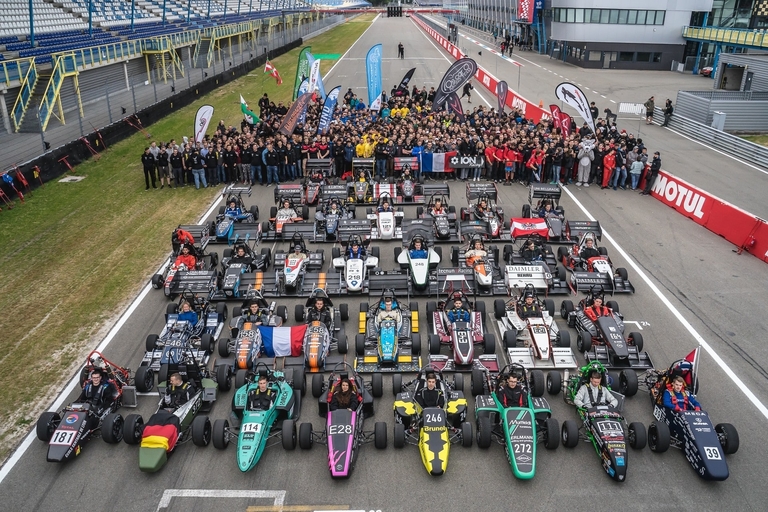
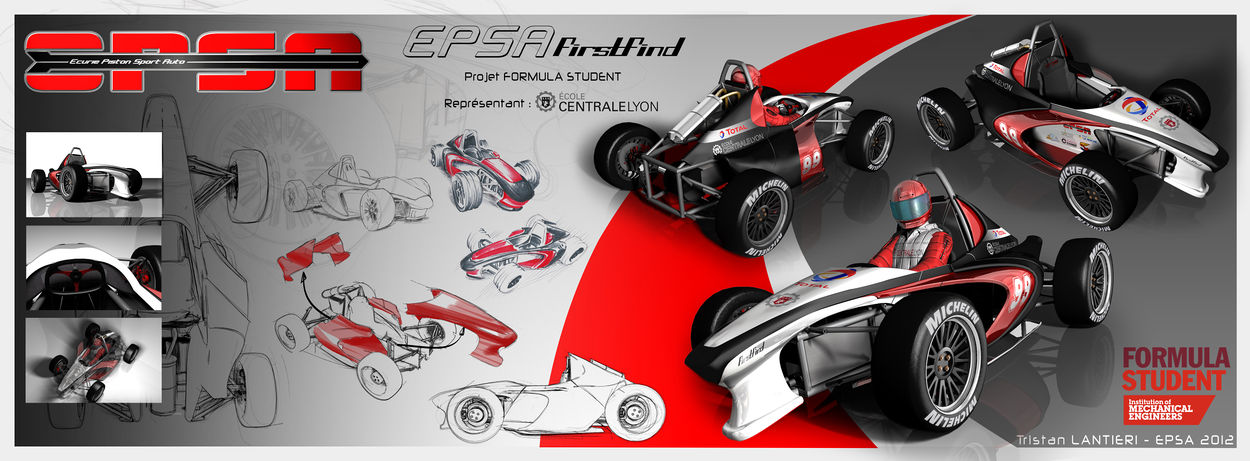
Sports cars
Racing cars are single-seater cars with open cockpit and visible wheels. Frames are tubular or monohull. They must strictly match the dimensions required. Cars are powered by a combustion engine of 710cc maximum. It includes a 20mm diameter inlet flange. There is also an electric category in the competition.
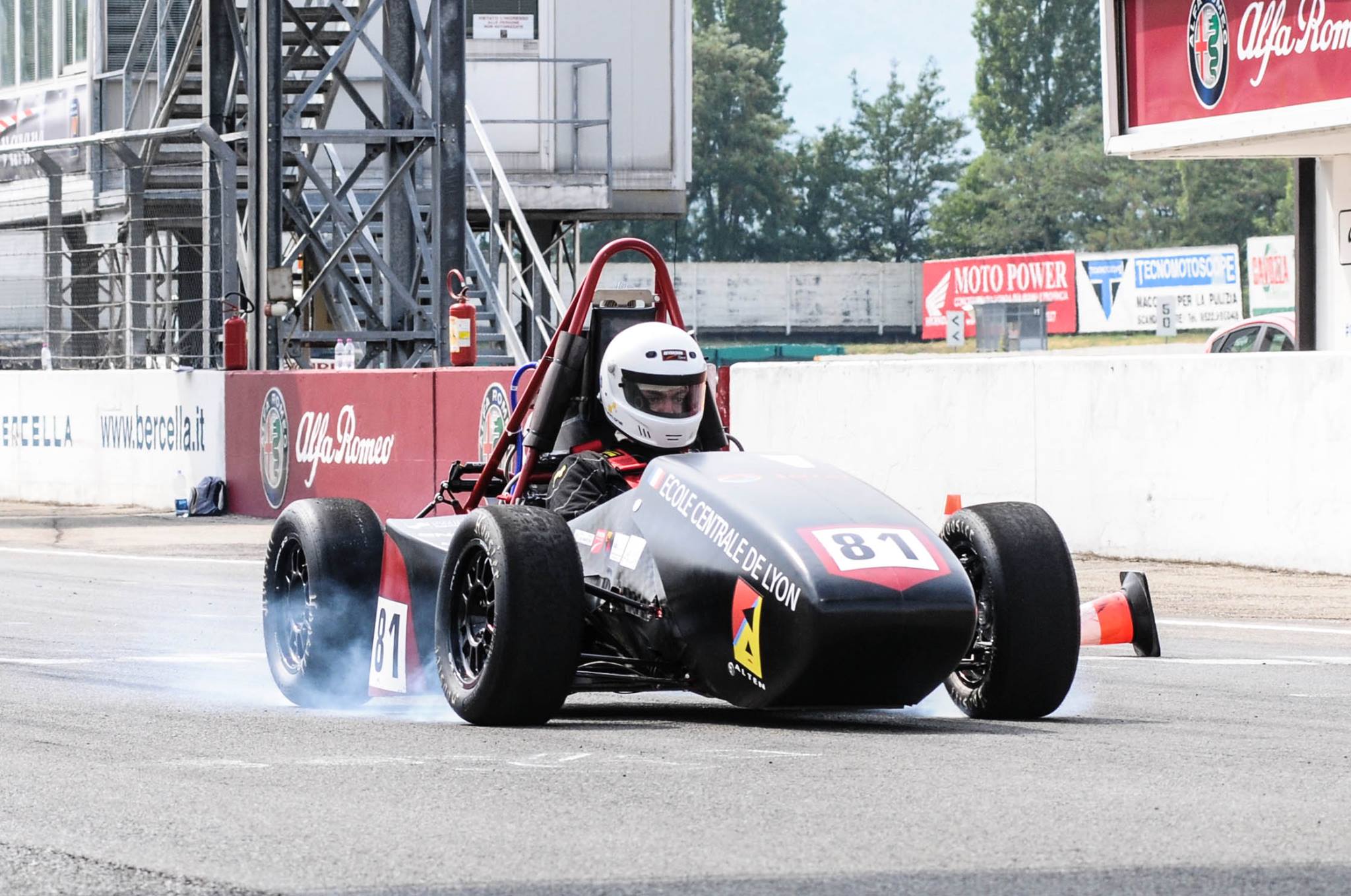
In average, cars weigh between 180 and 250kg and are able to go from 0 to 100km/h in less than 4.5 seconds.
More than 650 car racing teams take part in the Formula Student (500 with heat engine and 150 with electric engine). In France, 5 teams take part in the competition and each year EPSA produces a new vehicle. Six have already been made: Dynamix, Atomix, Kinetix, Olympix, Vulcanix and Optimus.
The competition
The Formula Student includes a series of differents events. Judges check whether the the noise as well as
The scrutineering
The scrutineering is a complete inspection of the vehicle in order to verify its conformity and the presence of all safety elements. Judges check whether or not the vehicle respect the noise limitation and has enough braking power to block the 4 wheels at the same time. A tilt-test (45° and 60°) allows to detect leaks and make sure the center of gravity is low enough so that the car doesn't overturn.
Once the vehicle passes the inspections, it is allowed to participate in the static and dynamic events.
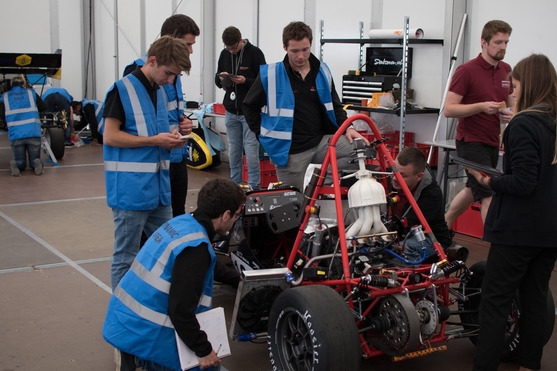
Static events
Cost and Manufacturing : The team must submit a detailed analysis of the car costs. Judges evaluates the ability to quantify every fabrication and assembly process essential to the vehicle as well as solutions that help minimize the costs.
Design : In this event, all technical choices related to the making of the car must be justified in an 8 pages file that includes explications and schemes.
Presentation : The team must persuade investors to commercialize their car on the market. The vehicle must answer to buyers expectations and be cost-effective at an industrial scale.
Acceleration : The vehicle must travel a 75-meter straight ligne as fast as possible.
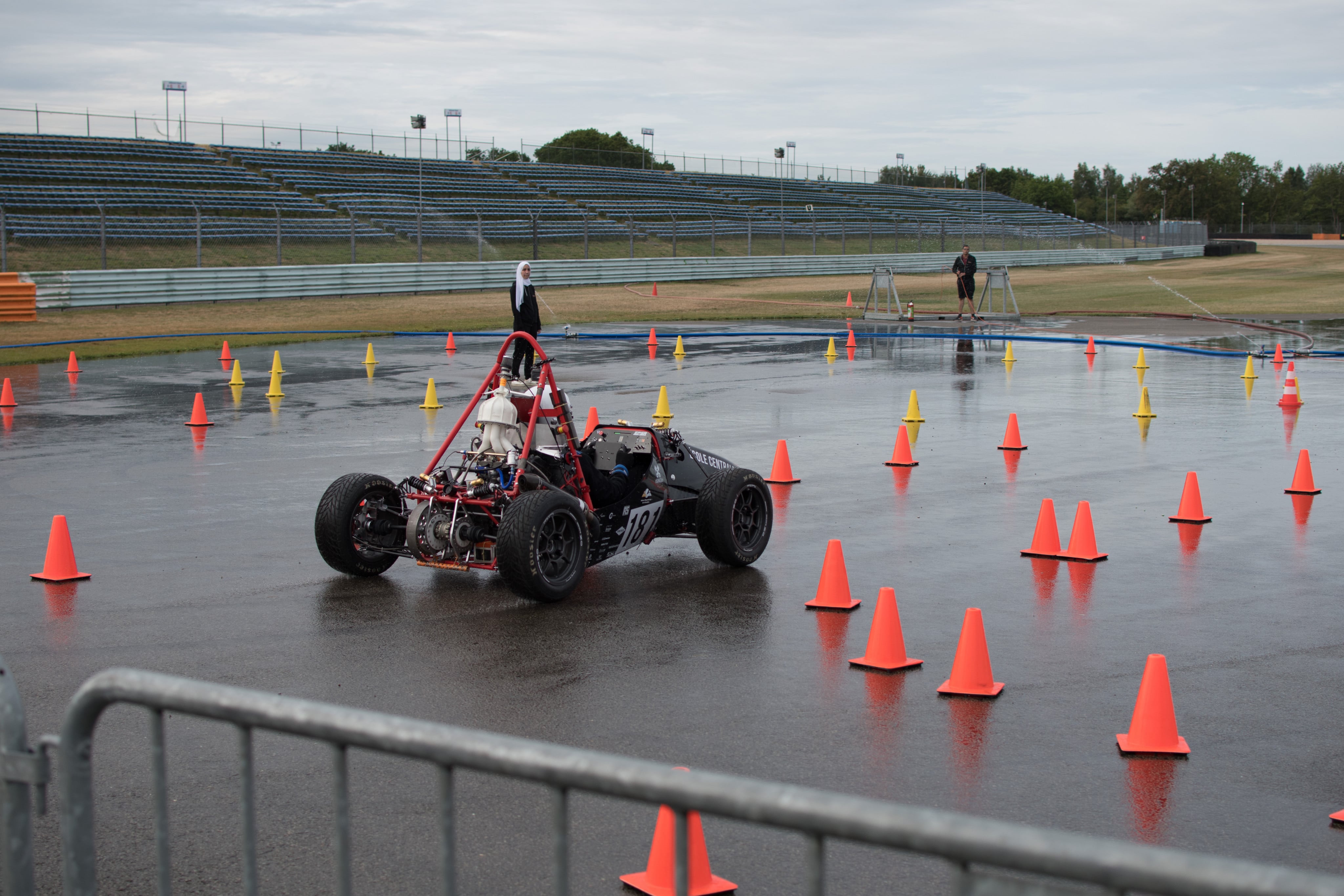
Skid-Pad : Manageability and toad holding are evaluated on a circuit.
Autocross: The vehicle must travel a 1-kilometer sinuous course as fast as possible. This event is a qualification for the endurance event.
Endurance : The car must ride 22km in two 11km relays on the same circuit as the autocross. Performances and reliability of the car are evaluated.
Efficiency : The vehicle must have a low fuel consumption, datas are picked during the endurance event.
The ranking is made with the total number of points as shown on the opposite figure.
In its first year of participation at the Formula Student, EPSA won the Best New-Comer award that rewards the best rookie team of the competition with the the vehicle Dynamix.
For its second participation,EPSA positions at the 31st place out of 108 teams. It is the best ranking for a French school and university.


